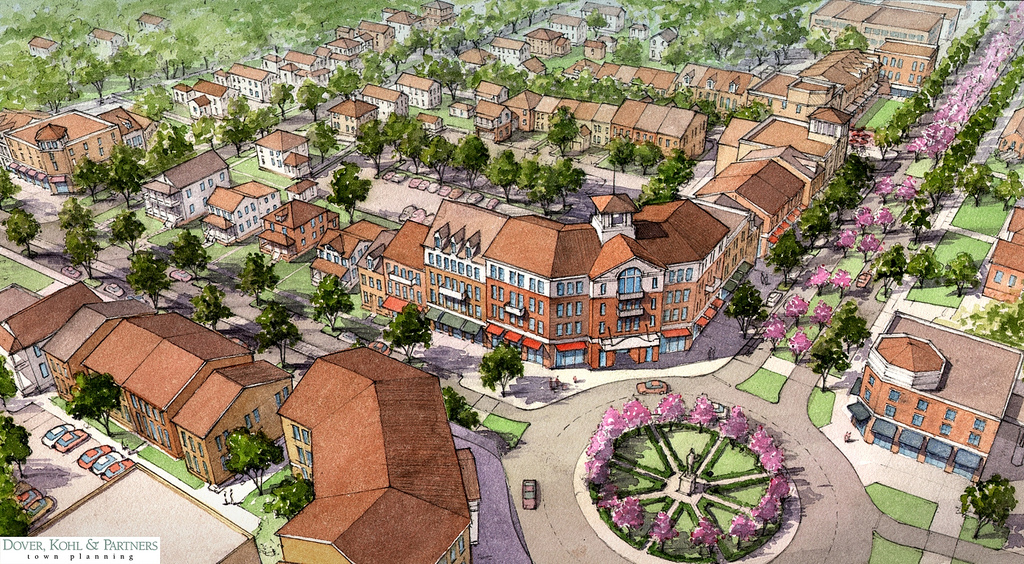
Given finite government resources and changing market trends, the RPA uses a "Centers and Corridors Approach" for Area Plans to help prioritize where city and county resources are invested, and provide a clear vision for where private growth and investment is encouraged.
The Centers and Corridors Approach has three essential concepts:
- Walkable, clustered Centers where retail uses are concentrated;
- Transit-supportive Corridors comprised of a mix of uses, including multi-family housing; and
- Medium and high density housing near Centers and Corridors to support their economic vitality and local transit viability.
Centers constitute a clustering of stores, offices, and other uses in convenient locations to service surrounding communities. Multi-family housing is then located within-and immediately surrounding-Centers to support transit services and give some people the ability to walk to jobs, shopping, or recreation. Centers also have important economic benefits. Retail businesses tend to be more successful when they are clustered together in a central location. Each business can then benefit from the customers drawn to the area by neighboring businesses. Centers can also provide for a more efficient use of limited City and County resources. Infrastructure costs for sidewalks, street lights, and street trees can be targeted to designated Centers instead of spread thin across an entire area.
In addition to Centers, major Corridors connect multiple neighborhoods and extend to other parts of the city or county. They often contain a mix of commercial, industrial, and residential uses. Due to population shifts, employment trends, and changes in the retail market, some sections of these Corridors are experiencing declining market shares and have a high rate of commercial business turnover. These locations therefore provide an opportunity for new multi-family housing, which:
- Can provide more affordable housing options,
- Create residential densities needed to support retail businesses, and
- Support more frequent transit service in the future.
Designating these Corridors as locations for new multi-family housing also supports the preservation of the single-family character of many existing neighborhoods, which is a concern often expressed by those residents.
